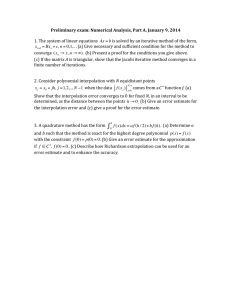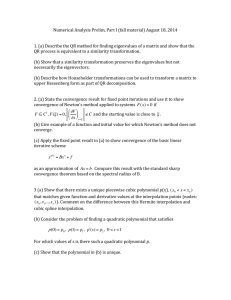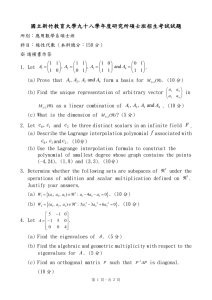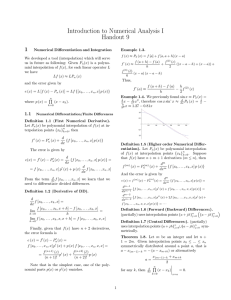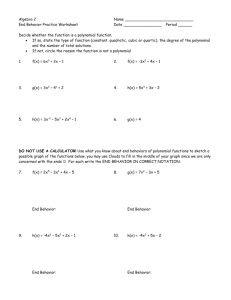Computer Generation of Network Functions:
advertisement
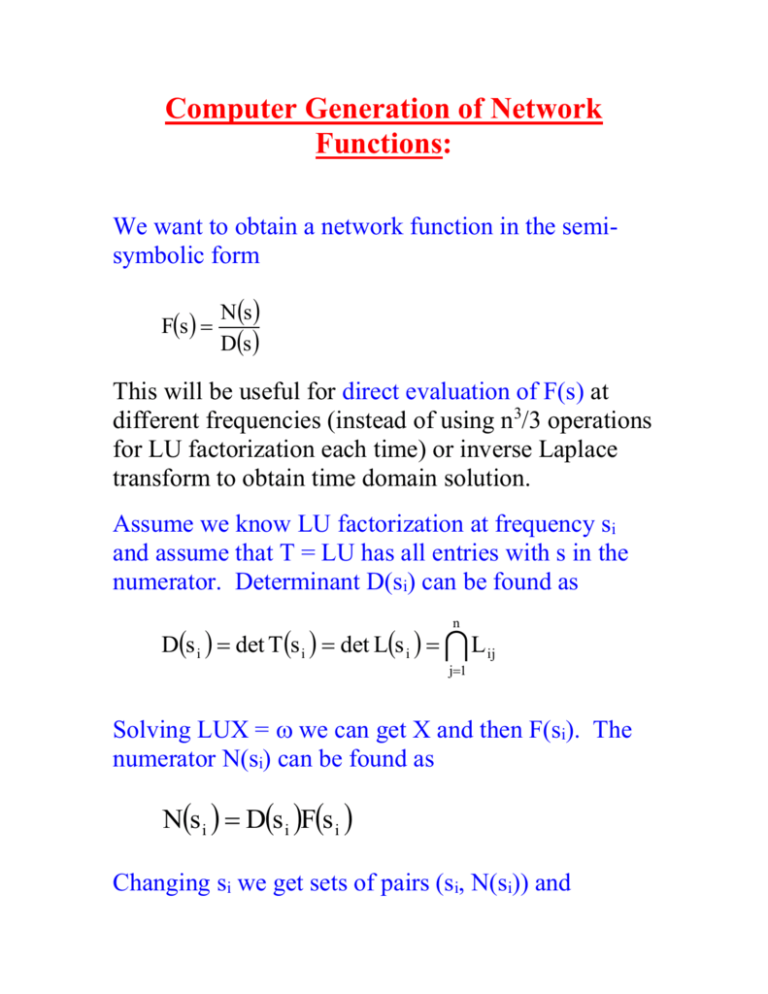
Computer Generation of Network Functions: We want to obtain a network function in the semisymbolic form Fs Ns Ds This will be useful for direct evaluation of F(s) at different frequencies (instead of using n3/3 operations for LU factorization each time) or inverse Laplace transform to obtain time domain solution. Assume we know LU factorization at frequency si and assume that T = LU has all entries with s in the numerator. Determinant D(si) can be found as n Ds i det Ts i det Ls i L ij j1 Solving LUX = we can get X and then F(si). The numerator N(si) can be found as Ns i Ds i Fs i Changing si we get sets of pairs (si, N(si)) and (si, D(si)), and we get the coefficients of N and D. This is a well-known problem of polynomial interpolation. Unit circle polynomial interpolation: Assume we have (n + 1) distinct points (xi, f(xi) = yi). We want to find coefficients of the polynomial n f (x) a j x i j0 We have a 0 a 1 x i a 2 x i2 ... a n x in y i or in the matrix form 1 x 0 1 x 1 1 x n x 02 x 0n a 0 x 12 x 1n a 1 x 2n x nn a n or Xa = y i 0,1,2,..., n a = X-1y = y0 y 1 y n j where X x i The most numerically stable selection of xi is on the unit circle. Let us define exp 2 1 n 1 and xk = k so X x ij ij 1 1 X X* and n 1 Therefore the solution is a X 1 y 1 1 X* y ij y n 1 n 1 1 n jk or simply a j n 1 y k k 0 Using this equation all coefficients of the approximating polynomial can be explicitly calculated. Finding each coefficient requires an addition of n + 1 complex numbers - each one easily obtained from the approximated function values yk. In addition the polynomial interpolation on the unit circle is the most numerically stable algorithm. Condition numbers for interpolation: Condition number K X for ~ the matrix X ~ is K x max / min ~ where max, min are the largest and smallest eigenvalues of XX*. K(X) is a measure of perturbations in y. In our case XX * XX 1 n 1 n 1I So all the eigenvalues of XX* are equal to (n + 1) and K(x) = 1. Note that K(x) 1 always. Therefore, the selection of all points on the unit circle yields the best possible accuracy of the polynomial approximation problem. Example Numerical value of the numerator and denominator are N s0 t1 3 Ds0 1 11 N s p 1 3 Ds p 1 7 Find transfer function (first order polynomials N(s) and D(s)). n=1 since n+1=2 T a 0 a 1s b 0 b1s exp 2 1 1 2 so 1 1 10 k Ns k 1 3 3 0 2 k 0 2 1 1 1 1k a 1 1 Ns k 3 3 3 2 k 0 2 1 1 1 0k b 0 1 Ds k 11 7 2 2 k 0 2 1 1 1 1k b1 1 Ds k 11 7 9 2 k 0 2 a0 And, we obtain T 3s 2 9s
